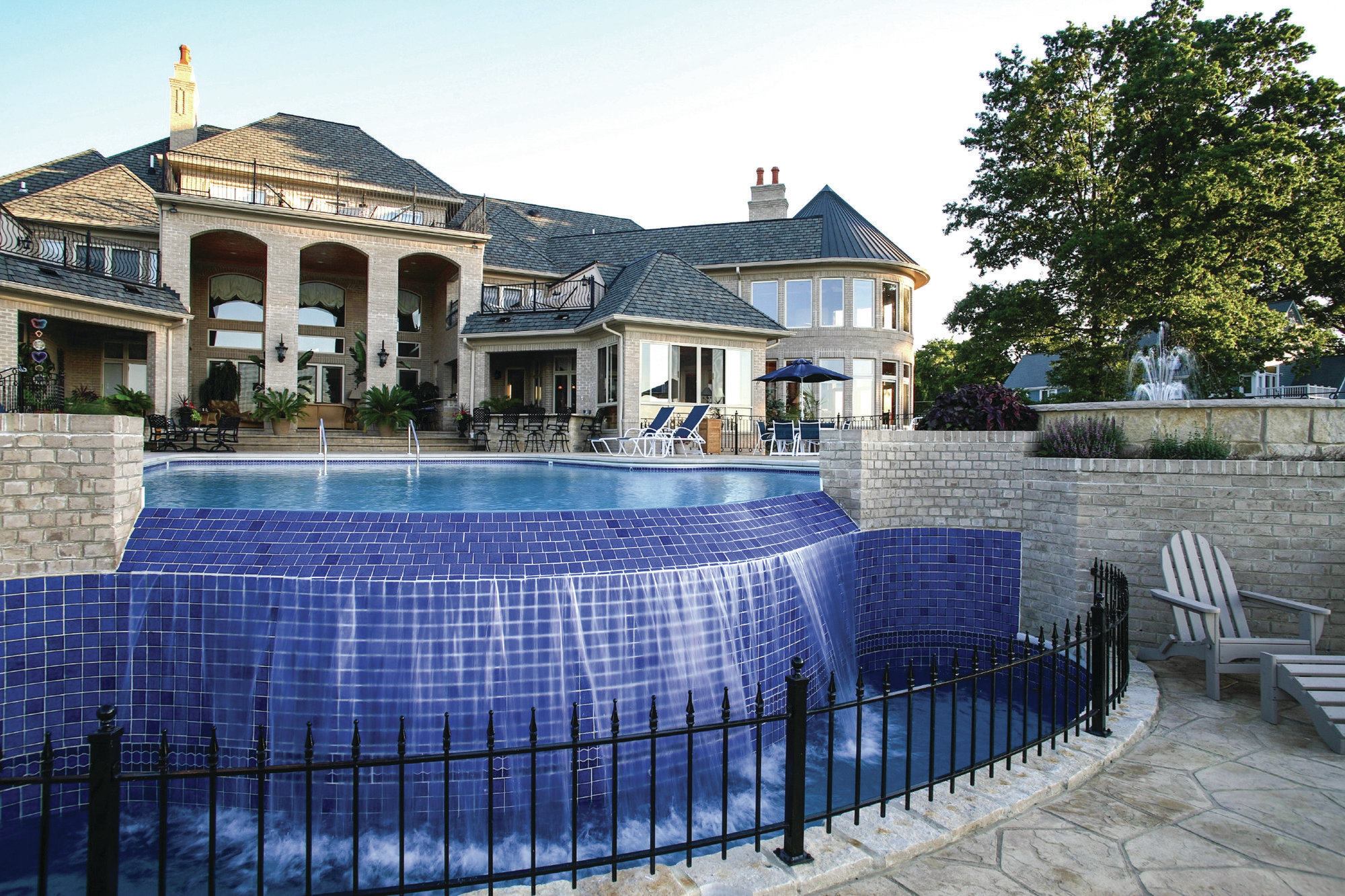There is probably no sweeter phrase in the English language than “maintenance free.” While there’s no such thing as a completely maintenance-free swimming pool, keeping your backyard oasis shimmering does not need to be an arduous, time-consuming task, nor does it require an advanced degree in chemistry.
Of course, the easiest approach to pool maintenance is to hire a professional service to take care of it for you. If you prefer to save some money and have even a little bit of do-it-yourself gumption, there are a variety of easy-to-use products readily available on the market that can help you keep your water clean and safe, and crystal clear.
Taking the test
The first thing you need to do to maintain the cleanliness and attractiveness of your pool is to test the water. You need to figure out what you are working with so you will know what to add. The primary task is to keep the right pH balance, or the level of acidity or alkalinity of the pool water. Improper pH levels can result in damage to pool surfaces and equipment, cloudy water, discomfort to swimmers, and can reduce the effectiveness of the chlorine.
Don’t worry if you have forgotten what pH is, along with everything else you learned in high school chemistry. Take a sample of your water to a pool supply store, where it can be tested for you. Most retailers change a small fee for this, but some will do it for free, especially if you are a regular customer. The test results — along with expertise from your supply store — will tell you about the quality and chemical make-up of your water, and let you know what you need to do to make the correct adjustments.
Water testing is easy to do at home. There are two basic types of home test kits: paper testing strips and liquid-based kits. Either type works fine and there are many easy-to-use test kits on the market. The important thing is to test your water often, especially during times of heavy use. Most pool professionals recommend testing two and even three times per week during peak use; monthly when pool use drops.
Keeping it clean
To prevent your pool from becoming a giant petri dish for bacteria, pathogens, algae and other undesirable stuff, you’ll need to sanitize the water by giving it a one-two punch of a steady supply of chlorine and a weekly “shock treatment,” or superchlorination.
Basic sanitizing consists of placing small, generally about 3-inch, tablets of compressed chlorine into your skimmer, floater or automatic feeder. The tablets are designed to dissolve slowly and release chlorine into the water at a steady rate.
Shocking your pool drastically raises the chlorine level of the water for a short period of time, killing bacteria and anything organic in its path. All types of pool shock are granular and dissolve quickly in water. Experts recommend that the shock first be dissolved in a 5-gallon bucket of water before distributing it into the pool. To avoid splashing the harsh chemicals, always add the granules to water, not the other way around.
When it’s not good to be green
Most people think of algae as green, but it actually comes in a variety of colors, including black, pink and yellow. Algae spores enter your pool constantly, brought in by wind, rain, even contaminated swimsuits. When conditions are right — warm temperatures, sunlight, the presence of nitrates, improper water circulation or filtration — an algae bloom can occur seemingly overnight.
Fortunately, there are a variety of easy ways to prevent and get rid of this aquatic creature. One of the best and more enjoyable ways is by using the pool. Algae thrives in still water, so the more the water in your pool is stirred up, the harder it is for algae to get a toehold. Keeping your filter and pump clean and in good working order also will help. As with good dental hygiene, regular brushing is an excellent, low-tech way of keeping the green meanies at bay.
If all else fails, there are many brands of algaecides readily available at any pool supplier, and they come with clear and easy-to-follow directions.
No more purple haze
If you have problems with staining or discoloration in and around your pool, you need to treat the water for common metals. Copper and iron are the most typical problems, though magnesium also is found to rear its ugly head in pool water from time to time.
Fortunately, there are a variety of chemical treatments on the market that make “pink slime,” “purple haze,” scaling and similar problems easy to deal with. These chemicals can work in several different ways, but their effects are similar: to isolate the offending metals and cause them to be carried out of the water through the pool’s pump and filtering system.
Maintaining your pool will never be as enjoyable as actually using it, but keeping the pool water clear and clean can be nearly as stress-free as splashing around in it with family and friends on a hot summer day.



